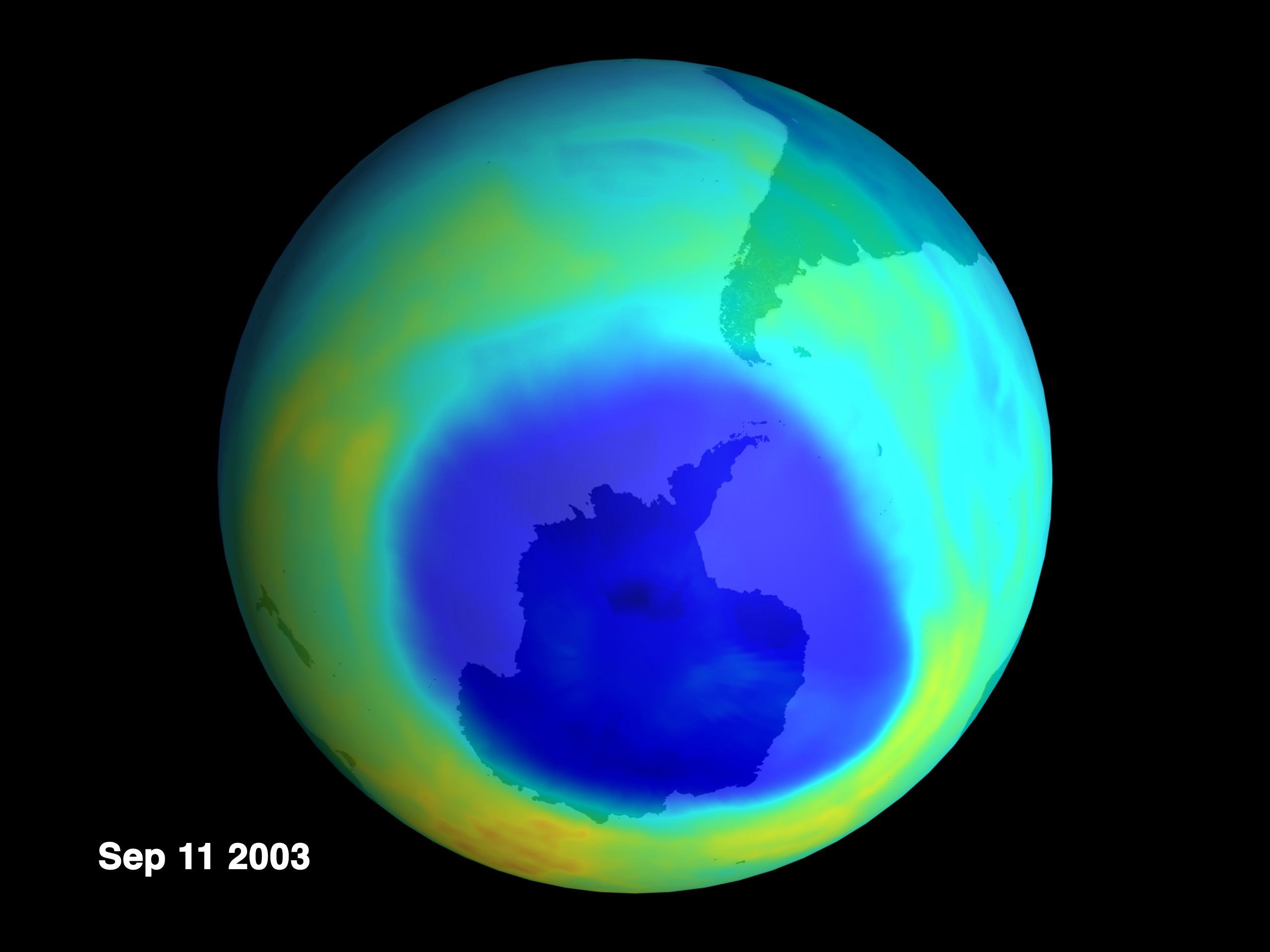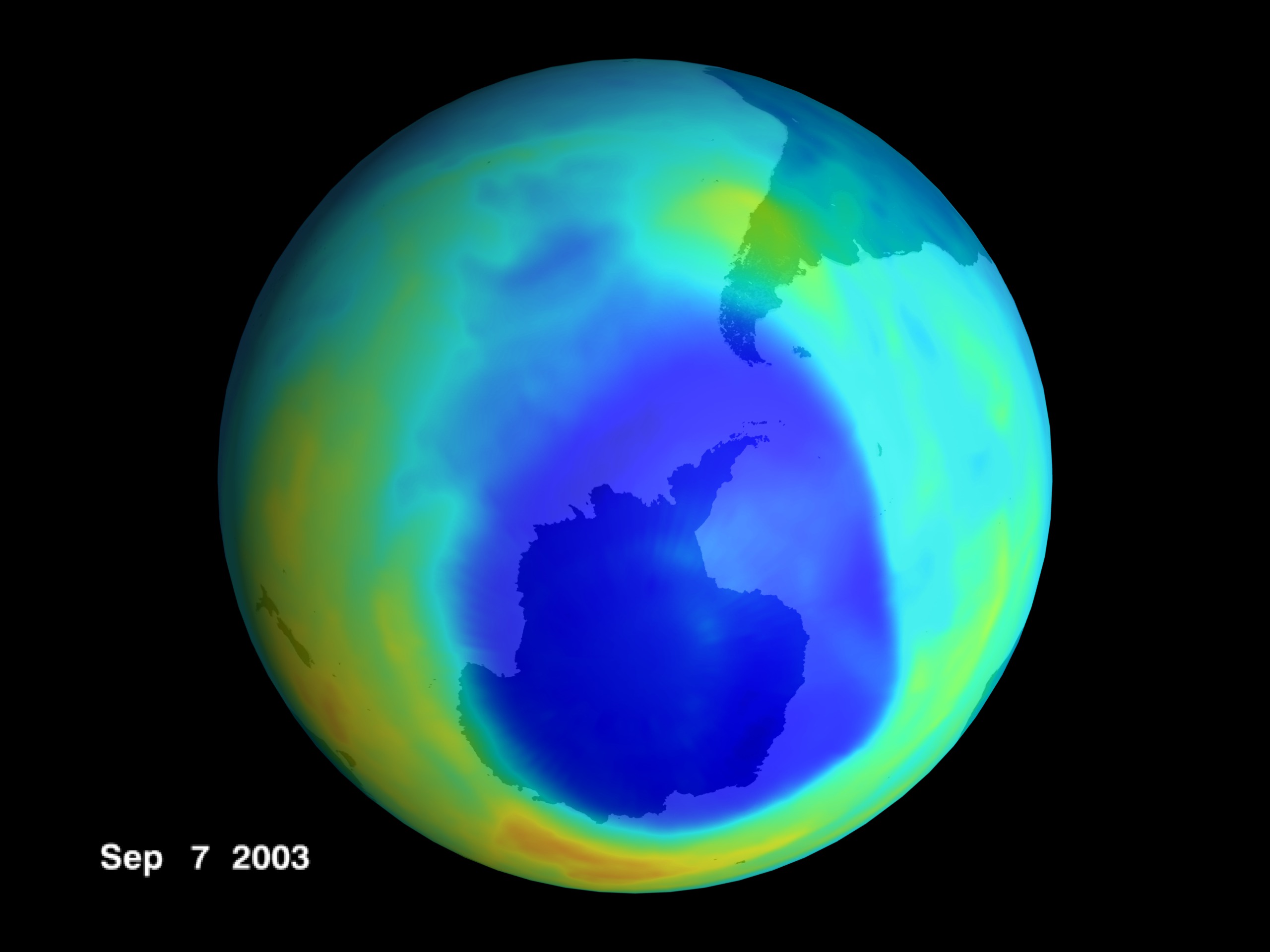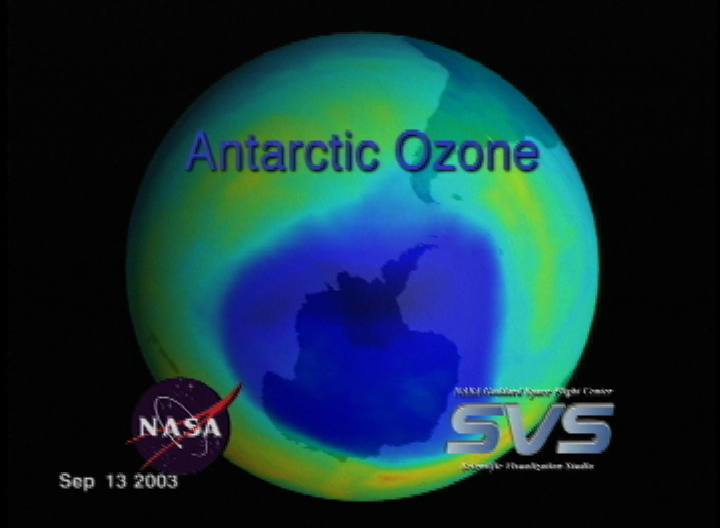Earth
ID: 2809
The 2003 Antarctic ozone hole was the second largest ever observed, according to scientists from NASA, the National Oceanic and Atmospheric Administration (NOAA), and the Naval Research Laboratory (NRL). The Antarctic ozone 'hole' is defined as thinning of the ozone layer over the continent to levels significantly below pre-1979 levels. Ozone blocks harmful ultraviolet 'B' rays. Loss of stratospheric ozone has been linked to skin cancer in humans and other adverse biological effects on plants and animals. The size of the 2003 Antarctic ozone hole reached 10.9 million square miles on September 11, 2003, slightly larger than the North American continent, but smaller than the largest ever recorded, on September 10, 2000, when it covered 11.5 million square miles.



Antarctic Ozone from TOMS: August 1, 2003 to September 23, 2003



Visualization Credits
Greg Shirah (NASA/GSFC): Lead Animator
Marte Newcombe (GST): Animator
Paul Newman (NASA/GSFC): Scientist
Marte Newcombe (GST): Animator
Paul Newman (NASA/GSFC): Scientist
Please give credit for this item to:
NASA/Goddard Space Flight Center Scientific Visualization Studio
NASA/Goddard Space Flight Center Scientific Visualization Studio
Short URL to share this page:
https://svs.gsfc.nasa.gov/2809
Data Used:
Note: While we identify the data sets used in these visualizations, we do not store any further details nor the data sets themselves on our site.
Dates of Data Used:
2003/08/01 - 2003/09/23
This item is part of this series:
Ozone
Goddard TV Tape:
G2003-054
Keywords:
DLESE >> Atmospheric science
NASA Science >> Earth
https://svs.gsfc.nasa.gov/2809
Data Used:
Earth Probe/TOMS/Ozone
2003/08/01 - 2003/09/23Dates of Data Used:
2003/08/01 - 2003/09/23
This item is part of this series:
Ozone
Goddard TV Tape:
G2003-054
Keywords:
DLESE >> Atmospheric science
NASA Science >> Earth











